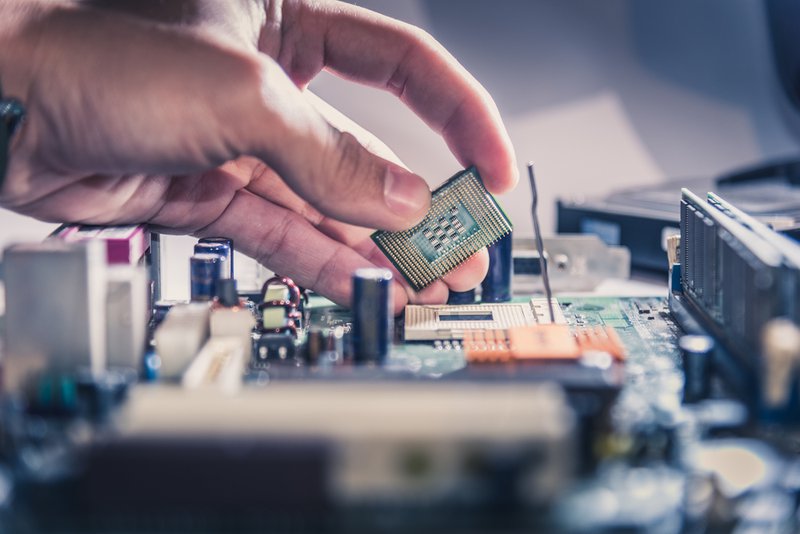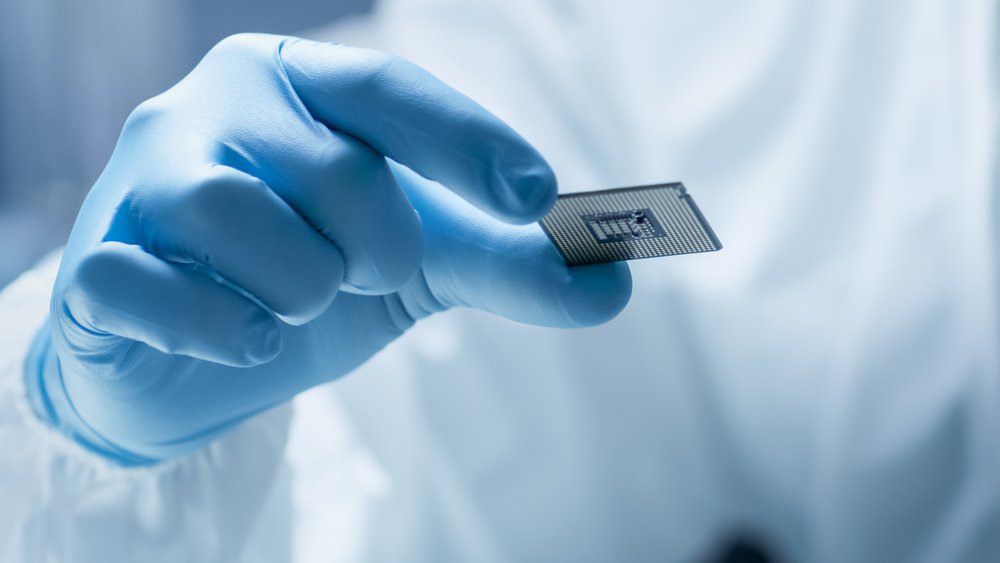A semiconductor chip processes data, rapidly calculating billions of results to power modern business. It can analyze customer data or conduct transactions. Chip technology also enables data center servers and other electronic devices like laptops and smartphones to function.
The power of the chip has undergone remarkable expansion over the decades, and there are both positive and negative impacts from this massive acceleration. Data centers now have access to significant processing speed and have become pillars of the global economy. However, these powerful processors also emit more heat as a byproduct.
Removing server heat safely and efficiently is one of the big data center challenges of this century. Fortunately, liquid immersion cooling has emerged as an innovative solution.

How Chip Technology Will Evolve
While the future path of chip technology remains elusive, we can already see the broad outlines by looking at how data centers have changed along with processors. For instance, power use has increased, driving up operational costs.
Chips are only going to continue growing in both importance and performance. Servers, laptops, phones, vehicles, appliances, and many other devices employ ever-faster hardware to meet the public’s increasing expectations.
Each year, information technology (IT) becomes more central to the global economy. There are more users and more processor-intensive applications. And each year, the chips that run IT undergo improvements to keep pace with demand.
Billions of dollars are invested into developing faster chips with more cores. In fact, the data center chip market is expected to grow from $11.7 billion to $45.3 billion by 2032.
How To Speed Up Data Center Processors
There are several approaches to speeding up processors. One way is to make the features smaller. But while this approach provides a speed boost, it becomes harder to control electronic currents through ever smaller channels. We’re also approaching physical limits that may impede this route, such as the size of atoms or the amount of energy necessary to modify a bit.
Other approaches include adding more circuitry to bigger chips and experimenting with different materials and architectures. For instance, future chips may use light, DNA, carbon nanotubes, or 3D structures instead of typical electronics. One way or another, processors will only get more powerful, requiring more electricity and producing more heat.
The increasing heat of processors has already been something of an issue, but we’re now hitting an inflection point. Chips coming to market for mainstream uses have record-high thermal design power. This pushes the limits of what conventional air cooling can handle. In fact, industry leaders are already moving toward higher-capacity cooling, such as Green Revolution Cooling’s (GRC) single-phase liquid immersion cooling.

The Impact of Chip Evolution on Data Centers
Concentrating high densities of powerful chips in data centers puts these facilities squarely in the crosshairs of growing demands. The effects of the chip evolution are multiplied, requiring even more adjustment in the data center than in other parts of the economy.
Faster, hotter chips will force data centers to manage their electricity inputs and heat outputs. These are already two of the most pressing concerns for data center operators, but the difficulty will increase along with chip power.
Data centers can hardly cool the heat now with air-based systems. Moreover, energy costs are burdensome to supply the processors and the power-hungry air coolers. And the environmental impacts only increase the financial tolls, since all this electricity produces toxic emissions.
There’s also a growing risk of thermal issues within the data center. Processors perform worse at high temperatures and become subject to failure. For tomorrow’s chips to work well and stay operational, we’ll need cooling solutions with greater capacity than air. More effective cooling solutions like liquid immersion raise the potential for higher computational performance and broader functionality.
Immersion Cooling is the Key
To resolve the challenges arising from more advanced chip technology, data centers need liquid immersion cooling. With a liquid immersion cooling system, servers are deposited (or immersed) in a liquid that can safely and efficiently cool electronics.
GRC develops industry-leading immersion cooling tanks, and they’re strong enough for the hotter and faster chips of today as well as tomorrow. Consider the ICEraQ, which can cool 368 kW; an order of magnitude more than air cooling. It’s the improvement necessary to respond to future chips that will draw more power and emit more heat. Racks full of chips that use 1 kW of energy each will need immersion to keep them cool.
While cooling high-density servers, the liquid immersion rack itself uses almost no electricity. Unlike air cooling, which can use as much power as the processors, liquid immersion cooling is energy efficient. That means this green cooling technology costs you less to operate and is good for the environment. It also simultaneously protects servers against corrosion and a range of other problems.
How are all these advantages possible? GRC has engineered liquid immersion cooling systems to deliver optimal heat removal. Liquid packs its heat dispersal capabilities more densely. And the servers have direct contact with the liquid, without any piping or plates to inhibit efficiency. Immersion cooling is the ideal tech to meet the growing demands of chip technology head-on.
Building the Future of Data Center Cooling With GRC
The fast pace of processor development will only continue in coming years. Data centers and other businesses have plenty of motivation to add chip capacity to stay on top of demand. But it will take innovative cooling solutions to manage the growing heat of this increased power.
GRC and its partners are continuously developing improved liquid immersion tanks, higher-performance coolant fluids, and optimized heatsink designs. These technologies enable heat removal for the hottest data centers and will future-proof your processing needs. Contact GRC now to prepare for tomorrow’s high-power chips.




